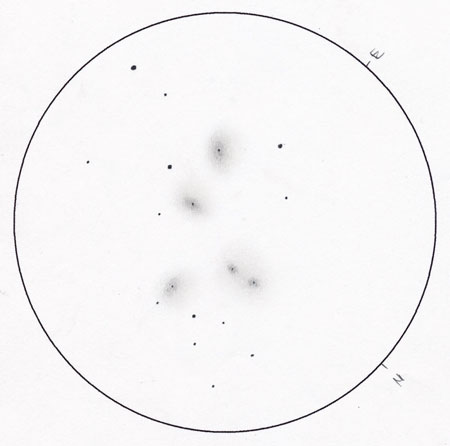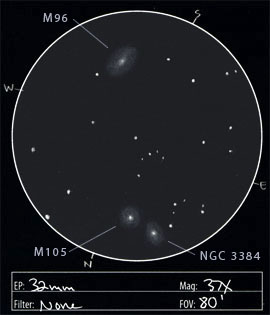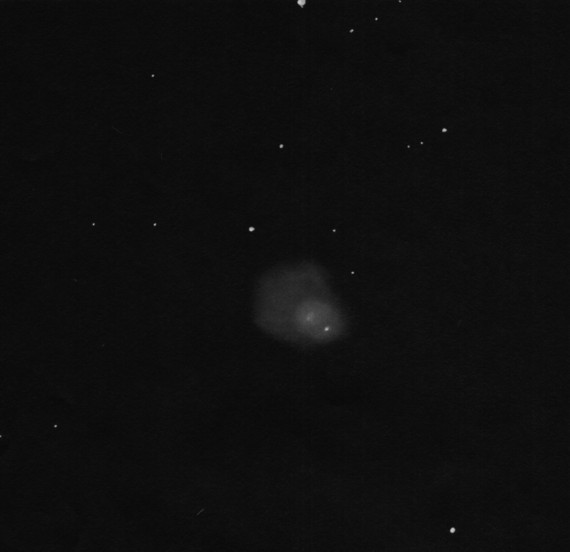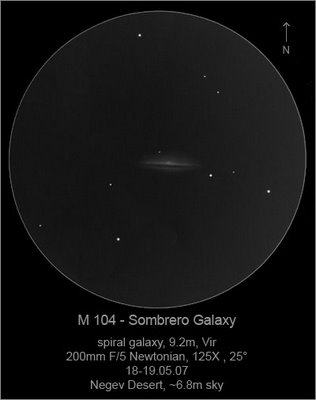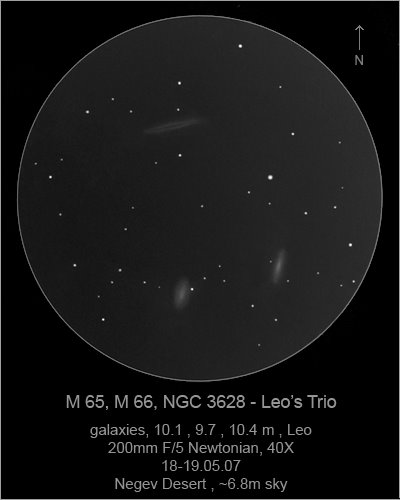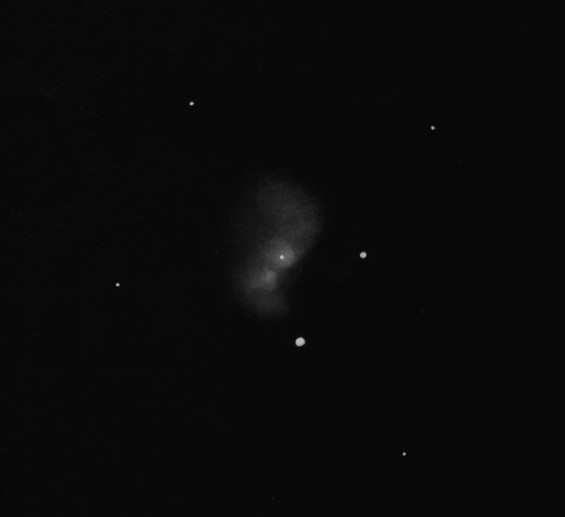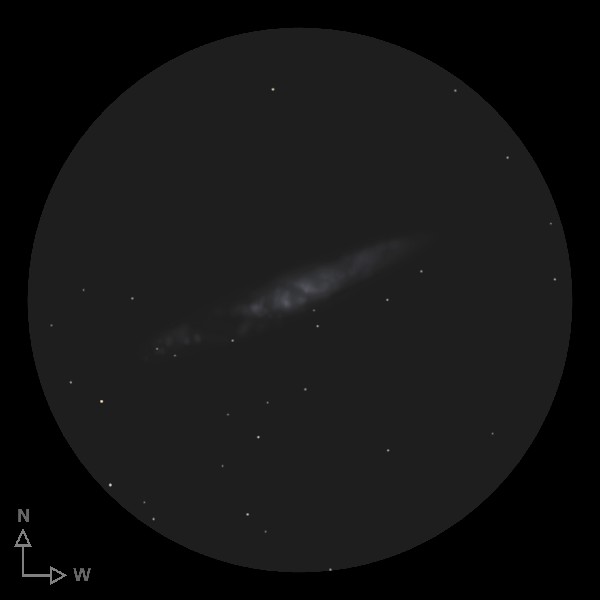Hickson 58
By Bill Ferris
Move mouse over image to view labels. Click the image for a larger version.
This sketch of the galaxy cluster, Hickson 58 was made by Bill Ferris using his 18 inch Obsession. He used a 12 mm Nagler T4, which provides a magnification of 199X when mated with the TeleVue Paracorr. Following are Bill’s notes on the observation:
Hickson 58 is populated by five stellar gothams ranging in brightness from 13.9 to 15.4 magnitude; all in the blue. Centered within the group is NGC 3822, a 14.1 (B) magnitude galaxy also known at Hickson 58A. Its stellar core is embedded within a 1′.5 by 1′ oval nebulosity of even brightness and aligned north to south. About 3′ to the east, Hickson 58B emerges from the darkness. This 13.9 (B) magnitude barred spiral is better known as NGC 3825 and, as with its neighbors, features a stellar core. The surrounding 2′.5 by 1′.5 nebulosity becomes gradually brighter toward the middle. NGC 3825 is flanked to the southwest by a 12th magnitude star and to the northeast by a 13th magnitude ember. About 5′ west of NGC 3822, the 14.3 (B) magnitude oval form of NGC 3817 (Hickson 58C) comes into view. This barred spiral displays a stellar core within a delicate 1′.4 by 1′, east to west, oval. A 14th magnitude GSC star stands entry 1′.5 to the west. The faint pairing north of center in my sketch, which renders a 199X view in the 18-inch, are Hicksons 58D and 58E. The 14.8 (B) magnitude elliptical galaxy NGC 3819 lies 4′.6 north of NGC 3822. This tiny, 0′.8 by 0′.5 galaxy is Hickson 58D. Another 2′ to the north stands Hickson 58E. This 15.4 (B) magnitude galaxy is also known as NGC 3820. It is similar in size to NGC 3819 and has the same north-south alignment.
The original entry for this observation and sketch can be found at Bill’s website:Cosmic Voyage: Hickson 58Additional detailed information on the cluster may also be found at the WikiSky entry for NGC 3822 (Hickson 58A)

